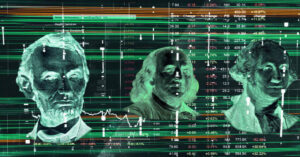Social media has become the primary platform for communication, information exchange, and community building. Among these platforms, Twitter (now called X) remains one of the most powerful tools for real-time interaction, news updates, and public conversations. With millions of tweets shared daily, it serves as both a personal space for expression and a professional arena for branding and discussion. However, not everyone wants to engage directly by logging in or interacting with posts. Many people prefer to browse quietly, exploring what others share without revealing their identity or leaving digital footprints. This is where the concept of a Twitter viewer comes in.
A Twitter viewer is essentially a method or tool that allows users to view Twitter content — profiles, tweets, images, and hashtags — without necessarily signing into a personal account or being visible to others. While the idea sounds simple, it touches upon many aspects: privacy, digital ethics, technology, and social interaction. In this comprehensive guide, we will explore the concept of a Twitter viewer in depth — its purpose, mechanisms, advantages, privacy implications, and the responsible ways to use it.
1. What Is a Twitter Viewer?
A Twitter viewer refers to a system, interface, or process that enables people to access and view public content on Twitter without the need to log in. This can include:
- Viewing public profiles
- Reading tweets and threads
- Checking hashtags and trends
- Seeing images, videos, and GIFs
- Monitoring interactions or discussions
In essence, it is a read-only form of access — users can see what others post but cannot interact, comment, like, or retweet.
This function serves multiple purposes: journalists monitoring public sentiment, researchers analyzing trends, businesses assessing customer feedback, or individuals exploring content without wanting to sign up. The concept of a “viewer” exists in almost every social network (like Instagram Viewer or Facebook Page Preview), but on Twitter, it’s particularly valuable because so much of Twitter’s content is public by default.
2. Why People Use a Twitter Viewer
People use Twitter viewers for a wide variety of reasons, ranging from convenience to privacy. Understanding these motivations helps to clarify the legitimate purposes behind such viewing behavior.
| Purpose | Description |
|---|---|
| Privacy | Users want to browse without leaving traces such as likes, follows, or search history. |
| Research | Scholars, journalists, or marketers analyze trends and public discourse without participating. |
| Curiosity | Casual users want to see what celebrities, politicians, or brands are tweeting. |
| Monitoring | Companies track public feedback about their products or services. |
| Accessibility | Some users cannot create accounts due to restrictions but still want to read news or discussions. |
The ability to observe public content anonymously allows individuals to stay informed while retaining control over their digital identity.
3. How a Twitter Viewer Works
A Twitter viewer operates by accessing Twitter’s publicly available data through legitimate means. Every tweet, unless marked private, is part of Twitter’s open network and can be viewed by anyone, even without logging in. A viewer essentially organizes and presents this public information in a user-friendly format.
A. Basic Functioning
- It connects to Twitter’s publicly available data endpoints.
- It retrieves tweets, hashtags, and profiles that are not restricted by privacy settings.
- It displays the content without requiring the viewer to sign in.
B. Types of Twitter Viewers
| Type | Description | Accessibility |
|---|---|---|
| Browser Viewing | Using Twitter’s web version directly without logging in. | Free, limited to public data. |
| Third-Party Tools | Websites or applications designed to display Twitter content. | May vary in features and safety. |
| API-Based Systems | Software tools that fetch data through Twitter’s API for research or analytics. | Used by developers or researchers. |
C. Limitations
While viewing public content is allowed, interacting (liking, retweeting, or messaging) is not possible without an account. Private accounts are completely inaccessible through any legitimate viewer.
4. Ethical and Legal Considerations
One of the most critical aspects of using any Twitter viewer is understanding ethics and legality. Twitter’s content is public, but how it is accessed and used matters greatly.
A. Ethical Use
Ethical use of a Twitter viewer involves:
- Respecting user privacy and avoiding stalking or harassment.
- Using the information only for observation, education, or research.
- Giving credit when referencing tweets or discussions.
- Not sharing screenshots or data that can harm others.
B. Legal Use
Legally, Twitter’s public data can be viewed by anyone, as long as:
- You are not bypassing restrictions on private accounts.
- You are not scraping or storing user data in violation of terms of service.
- You do not impersonate another account.
Responsible use ensures that the viewer remains a tool for awareness, not exploitation.
5. Advantages of Using a Twitter Viewer
Using a Twitter viewer has multiple benefits for individuals, researchers, journalists, and organizations. These advantages are rooted in convenience, safety, and accessibility.
A. Privacy Protection
You can browse freely without sharing your personal data or exposing your profile activity. It’s an ideal way to stay informed without being visible.
B. Quick Access to Public Information
A Twitter viewer saves time for users who only want to check news, events, or trends without navigating a full account interface.
C. Research and Analysis
It allows professionals to analyze discussions, monitor hashtags, and identify public sentiment around specific topics — all without interference or bias caused by algorithmic personalization.
D. Security
By not logging in, users reduce risks of phishing or account hacking. Viewing public content directly avoids entering personal credentials on third-party platforms.
E. Accessibility
For users in regions with internet restrictions, or those avoiding social media distractions, a viewer provides lightweight access to valuable information.
6. Limitations and Risks
No system is perfect, and Twitter viewers come with their own set of restrictions and potential drawbacks.
| Limitation | Explanation |
|---|---|
| Limited Interaction | You cannot like, reply, or retweet content. |
| Privacy Boundaries | You can’t view locked or private accounts. |
| Data Accuracy | Some third-party viewers may display outdated or incomplete tweets. |
| Security Risks | Using unverified third-party tools can expose users to malware or data theft. |
| Dependence on Twitter’s Policy | Any change in Twitter’s API or public access policy can restrict viewer functionality. |
These limitations underline why it’s important to choose reliable and transparent viewing methods.
7. Responsible Viewing Practices
While using a Twitter viewer may seem harmless, responsible viewing helps preserve the ethical standards of digital engagement.
Key Responsible Practices:
- Avoid illegal data scraping. Never download or distribute user data without consent.
- Do not misuse information. Tweets can be taken out of context; always verify sources.
- Respect creators. If referencing tweets for academic or public use, give proper credit.
- Stay transparent. When conducting research or journalism, disclose that data came from public sources.
- Prioritize safety. Use secure networks and avoid suspicious third-party sites.
8. Twitter Viewer for Businesses and Marketing
For organizations and marketers, a Twitter viewer is more than just a browsing tool; it is a gateway to public insight. Businesses use it to observe market trends, customer feedback, and industry news without directly engaging in public posts.
| Business Use | Purpose |
|---|---|
| Brand Monitoring | Checking how people talk about a company or product. |
| Competitor Research | Observing rival campaigns and hashtags. |
| Trend Analysis | Identifying what topics or discussions are gaining popularity. |
| Crisis Management | Tracking public sentiment during a controversy or crisis. |
| Influencer Evaluation | Reviewing influencers’ public engagement before collaborations. |
This makes a Twitter viewer a valuable component of digital intelligence — allowing brands to adapt quickly without compromising authenticity.
9. Academic and Journalistic Uses
Researchers and journalists rely on Twitter as a pulse of public opinion. Through ethical use of viewers or public APIs, they can collect information to understand social trends, political movements, or public reactions to events.
For instance:
- A journalist can track public opinion on a breaking story.
- A sociologist can analyze digital activism.
- A linguist can study how hashtags evolve in communication.
Twitter’s open nature turns it into a live archive of modern culture, and a viewer provides the lens to study it without interference.
10. Privacy on Twitter: Understanding Public vs. Private
It’s important to understand how privacy works on Twitter to know what a viewer can and cannot access.
| Account Type | Visibility | Accessible Through Viewer |
|---|---|---|
| Public Account | Tweets and profile info are visible to everyone. | ✅ Yes |
| Private Account | Tweets visible only to approved followers. | ❌ No |
| Protected Tweet | Specific tweet hidden from non-followers. | ❌ No |
| Deleted Tweet | Removed from all systems. | ❌ No |
| Suspended Account | Temporarily or permanently restricted. | ❌ No |
This structure ensures that a Twitter viewer respects user consent — only showing information that users have chosen to share publicly.
11. How Twitter’s API Shapes Viewer Functionality
The Twitter API (Application Programming Interface) allows developers to access public data for approved purposes such as analytics, trend tracking, or academic study. Legitimate viewers rely on this API to function efficiently.
The API provides:
- Access to tweet content, hashtags, and engagement metrics.
- Data limits to prevent misuse.
- Secure endpoints to ensure user privacy.
Unauthorized scraping or cloning of Twitter’s interface violates these terms. Therefore, responsible viewers must operate within official data-sharing boundaries.
12. The Evolution of Twitter Viewers Over Time
Initially, Twitter’s open platform allowed anyone to read tweets freely through browsers. Over time, with privacy concerns and the introduction of personalized feeds, login prompts became more frequent. However, developers and researchers continued to create safe, read-only viewers for legitimate use.
The evolution can be summarized as follows:
| Period | Development | Impact |
|---|---|---|
| 2006–2010 | Open access to all tweets without login. | Encouraged transparency and public communication. |
| 2011–2018 | Introduction of third-party tools and APIs. | Enabled analytics and trend monitoring. |
| 2019–2023 | Increased privacy controls and account-based viewing. | Restricted anonymous browsing. |
| 2024–Present | Balancing openness with safety. | Emergence of verified, ethical viewer platforms. |
This history shows that while privacy rules evolve, the principle of open access to public information remains intact.
13. The Psychology of Viewing Without Engaging
From a behavioral perspective, using a Twitter viewer reveals a fascinating side of digital psychology. People are naturally curious about others’ thoughts, but they often fear judgment, exposure, or data tracking. Viewing content anonymously allows psychological safety — a digital equivalent of observing a crowd quietly.
However, over-reliance on anonymous viewing can reduce social connection and empathy. Therefore, responsible viewers balance observation with mindful participation when necessary. In digital ethics, it’s often said: “View with respect, engage with intention.”
14. Benefits of Twitter Viewers for Public Awareness
Twitter viewers also support public awareness and transparency. Activists, journalists, and global citizens use them to monitor unfolding events, humanitarian crises, and discussions that shape societies. Because Twitter serves as a real-time news channel, being able to observe without filters or algorithms helps individuals access authentic information directly from the source.
For example:
- During elections, viewers can follow live citizen reporting.
- During natural disasters, people can track rescue updates.
- In global movements, users can witness diverse perspectives in real time.
Such awareness strengthens civic responsibility and informed citizenship.
15. Safety Tips for Using a Twitter Viewer
To protect yourself and your data, it’s essential to use viewers safely. Not all platforms are trustworthy.
Safety Guidelines:
- Only use verified or official viewing methods (like Twitter’s own public access).
- Avoid giving personal information or passwords to third-party sites.
- Don’t download unknown extensions or apps claiming to be “viewers.”
- Use secure connections (HTTPS) and reliable antivirus software.
- Never engage in harassment, stalking, or data misuse while viewing.
Digital safety is an extension of personal ethics. Respect for others’ digital space is part of global digital citizenship.
16. Future of Twitter Viewing
As Twitter continues to evolve under new ownership and branding as “X,” public data access policies are changing. The future likely includes a balance between user privacy and data transparency.
In the near future, we may see:
- Verified research viewers with stricter guidelines.
- AI-based viewers analyzing tweet patterns ethically.
- Integration of blockchain for data authenticity.
- Advanced moderation to prevent misuse.
The ultimate goal will be to make public information accessible while ensuring that individuals’ rights remain protected.
17. Comparison: Twitter Viewer vs. Full Twitter Account
| Feature | Twitter Viewer | Full Account |
|---|---|---|
| Login Required | No | Yes |
| Can Interact (Like/Reply/Retweet) | No | Yes |
| Access to Private Tweets | No | Yes (if approved follower) |
| Data Privacy Risk | Low | Higher (depends on activity) |
| Customization | Limited | Full control |
| Use Case | Observation and analysis | Communication and engagement |
Both options serve different user intentions — the viewer offers privacy and simplicity, while the full account offers community and voice.
18. Conclusion: The Balanced Way to Use Twitter Viewers
The concept of a Twitter viewer is rooted in freedom — the freedom to access information, observe human expression, and understand global conversations without being forced into participation. However, with this freedom comes responsibility. Viewing should never cross into surveillance, misuse, or unethical collection of data.
A responsible Twitter viewer acts as an informed observer, using knowledge for positive change — not for harm or exploitation. Whether for research, awareness, or curiosity, it reflects the value of digital citizenship in the modern era: privacy with purpose, observation with respect, and information with integrity.
In essence, the best use of a Twitter viewer is not merely to see the world’s conversations, but to understand them — quietly, ethically, and wisely.
FAQs
1. What is a Twitter viewer used for?
A Twitter viewer allows users to view public profiles, tweets, hashtags, and media without logging into a Twitter account.
2. Is it legal to use a Twitter viewer?
Yes, as long as the viewer accesses only public content and does not violate Twitter’s terms or scrape private data.
3. Can a Twitter viewer see private or deleted tweets?
No. Private, protected, or deleted content is completely inaccessible through legitimate viewers.
4. Are third-party Twitter viewers safe?
Some are, but caution is necessary. Always use reputable, secure platforms and never enter personal login details.
5. Why might someone prefer viewing without an account?
Users may want privacy, research data, or quick access to trends without creating a digital footprint or account history.









